Russian Tunnels are designed in St Petersburg
Underground Expert interviewed deputy director for the tunnel’s design of the design institute Lenmetrogiprotrans Andrey Nikolaevich Soloviev about the future of the recent notorious projects, a number of the designs which never make it into reality and the present of the tunnel construction in Russia.
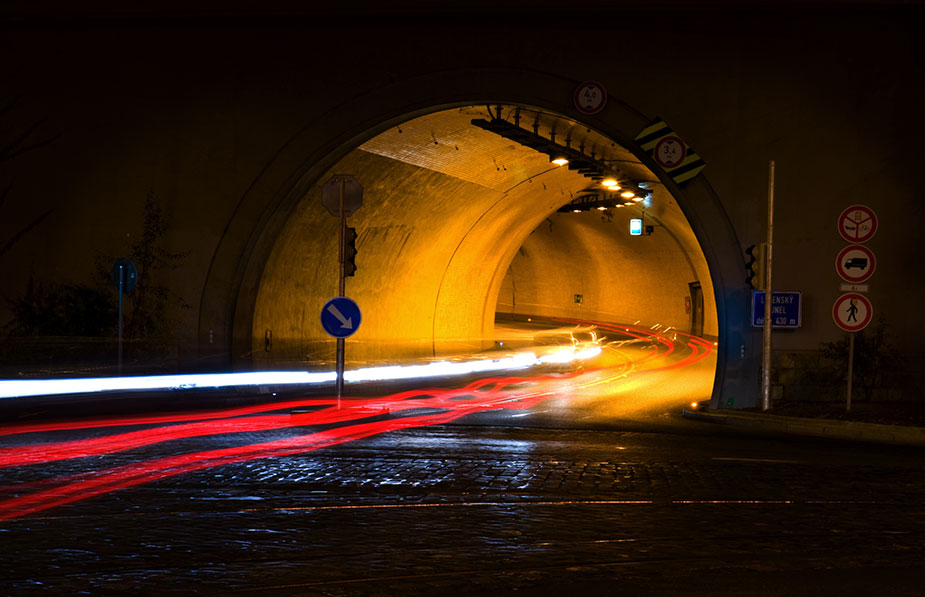
— Andrey Nikolaevich, you run one of the largest design establishments in St Petersburg with the number of staff close to 400. What do all these people do? At the first glance, St Petersburg metro system does not have too many stations, but you do many projects across the country and abroad, right?
— The institute is heavily engaged with the projects in Russia, mainly metro stations in Moscow and St Petersburg. Frankly speaking, there are no foreign projects running at the moment, it is more about suggestions. We have some offers – mostly to provide consultations, and we consider them. Right now we are in discussion about some strategic transport links planning in India, in the areas close to China. The construction work will be implemented there by local companies, the Russian company RZD International and the Italian Geodata, the project will be developed by Geodata and our Lenmetrogiprotrans.
— So you do not run at the moment any big foreign project as you did in Syria and Algeria once?
— There is no time, the engagement of the institute is triple, especially now when we have a lot of work with the Moscow metro system. If we add one large project more, we will struggle with the HR issues, and we are not ready to employ many people suddenly as we are highly concerned with the quality of our work. With a background like that, our Syrian and Algerian projects make barely 5% of the total usual engagement of the organisation.
— And what about other 95%?
— Metro, of course. The only time the tunnels took over the majority of the working plan was the period of the preparation work for the Olympic Games in Sochi, the tunnels made 60% of the designed projects.
— Now you have some projects in the Far East, the tunneling of the second Baikal was completed recently according to your design. Could you tell us about the other well-known projects in this area – long time project of the tunnel to Sakhalin island, for example? A couple of years ago the President mentioned it in his annual press conference, how did it change its fate?
— The project is relevant and the meetings with authorities and designers are held. Currently, we are at the stage of the basic design. Those who involved in the bridge construction suggest their projects for 516 million rubles, our cost is about 98. Furthermore, the tunnel has more advantages in this case due to the climate conditions, maintenance cost and the cost of the construction itself. We plan the route to go from the cape Sredny to the cape Pogibi in 100 meters to the South from the route designed in 1951. This solution matches the route of the railroad. And we suggest one-track tunnel.
Both capes have quite difficult geological structure, so we specified the measures against seismic vulnerability 9. If we work from both ends with two EPB TBMs the construction will be finished in 4.5-5 years. The design has not been confirmed yet. There are still some doubts about the final decision. It will be safe to say the transport link will be constructed, whether it will be the bridge or the tunnel stays uncovered.
— When do you expect the final decision to be made?
— It is hard to say, another project mentioned recently by the President won the priority status – the tunnel under the Gulf of Sevastopol.
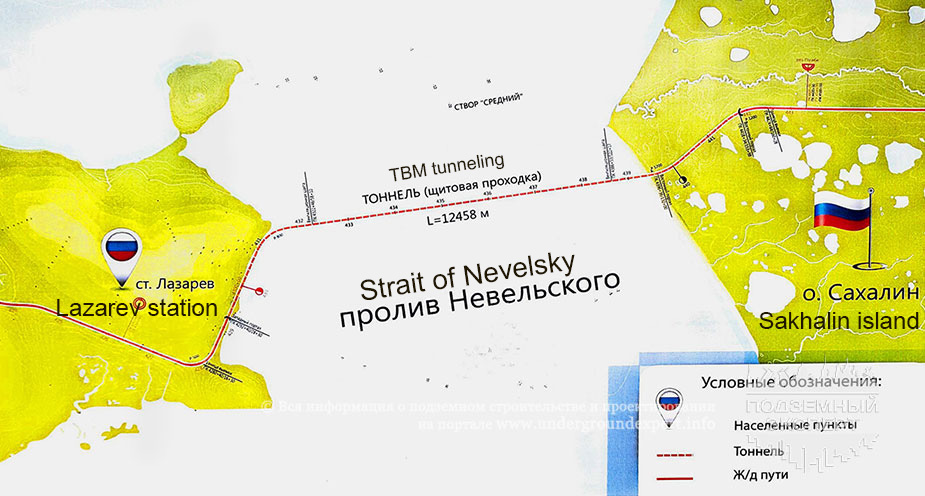
The possible design of the tunnel in the Strait of Nevelsky, ОАО NIPII Lenmetrogiprotrans
— Are you engaged in this project as well?
— Yes, we do the financial calculations, consider the solutions, actually, the situation is similar to the Sakhalin link: bridge or tunnel? This particular project has been suspended for a long time. The southern bank gives us a lot of challenges since there are many buildings along the route of the future road. It is Sakhalin situation with random two bears wandering in the field, here we have a great deal of the expensive real estate and some historical buildings like the old hospital of Sevastopol marines built in 1930–40. We do not know yet the zones. And it is hard to establish if it is harder to make a bridge connection or a tunnel for many reasons influencing the final decision besides the financial.
I used some developments we made for the Orlovsky tunnel which has never been implemented. So the work was not useless. But it is not rare when the work stays uncalled. We did the project of the road tunnel in Primorsky district of St Petersburg and the bridge was chosen later. The Western High-Speed Diameter there could have one tunnel as well, but once again the authorities decided for the bridge.
Andrey Soloview shows numerous folders with the papers and plans staffed inside which cover his two working desks and shelves. The designs of the tunnel in Tuapse, tunnel at the Primorsky prospect, the huge folder with the designs of the Orlovsky tunnel and many others, developed and never implemented.
— Could you estimate the ratio of the projects passing the stages of development and expert estimation and then staying unimplemented?
— It is 50/50. The half of our work stays in our offices.
— What returns such a devastating result, the system of the work management or other reasons?
— More likely the former, many rejections are based on the changes in the in the initial situation or political reasons. For example, we developed the design of the Arkhotsky rail tunnel. This tunnel through the Greater Caucasus Mountain Range, 23 km long. And then what happens? The war in Chechnya started on the one side, and the political situation escalated in Georgia on the other side. Long-term projects may encounter the situations changing their fate and not depending on the designers or construction workers.
Sometimes it is really game of chance. We had been fighting for the tunnel solution for the transport connection in Crimea and instead of Kerchensky bridge, there might be a tunnel. We suggest the same solution that proved itself authoritative under the English Channel. But when we announced the price, the bridge constructors lowered theirs to the same level and got the contract. Also, the advantages of priority influence the decision as well. The tunnels are better from the point of safety and maintenance, the bridge allows more traffic, it has to be four-lined at least due to the technical requirements of lateral rigidity. The tunnel might have 2 lines. Do we need more lines in all the cases? The extra lines make extra expenses.
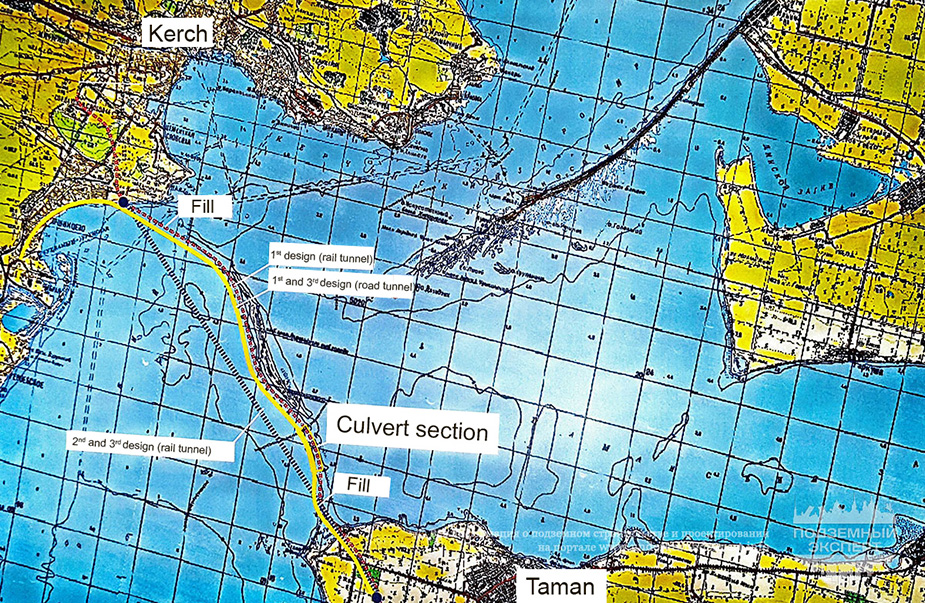
Layout schematic of the tunnel under the Kerch Strait
— May we say the tunnel construction became less expensive in the last decade or two? Can we demolish the myth about its fantastic high prices used many times during the public talks about underground construction?
— In theory, the construction process itself became cheaper even without the fact about less expensive further maintenance in the future. It happened mostly thanks to the advanced technologies. The pace of construction increased the number of required workers lessened. For example, the first Baikal tunnel had 2000 people engaged and only 4000 worked at the construction of the second Baikal tunnel. One kilometer of the tunnel in Novorossiysk several years ago cost about 50 million euro, now our eastern tunnels cost 40 million per kilometer. The cost rises when the construction process is divided between several organizations, which do not very well coordinated.
— The river Amur is not far from these tunnels. And your institute developed recently the design for the tunnel underneath it. The same specialists work at the projects of the underground and submerged tunnels? What can you say about the cost of the underwater tunnels?
— The competent person makes tunnels in all settings. And the tunnel under Amur is not constructed from the start, we talk about redevelopment, so we cannot compare the actual price. The route is not straight, 7 km long, with 10 workings. The unique structure is the second longest tunnel in Russia (The first is the rail tunnel Severomuyskiy as part of the BAM, also designed by Lenmetrogriprotras).
We proceeded with these projects slowly and got the positive answer from the State Expertise. If the funding is found there will be the tunnel. If they had to start a new tunnel, it would cost about 30 billion rubles, reconstruction costs 22. Anyway, it is a serious amount of money, but the design got approval and can be implemented.
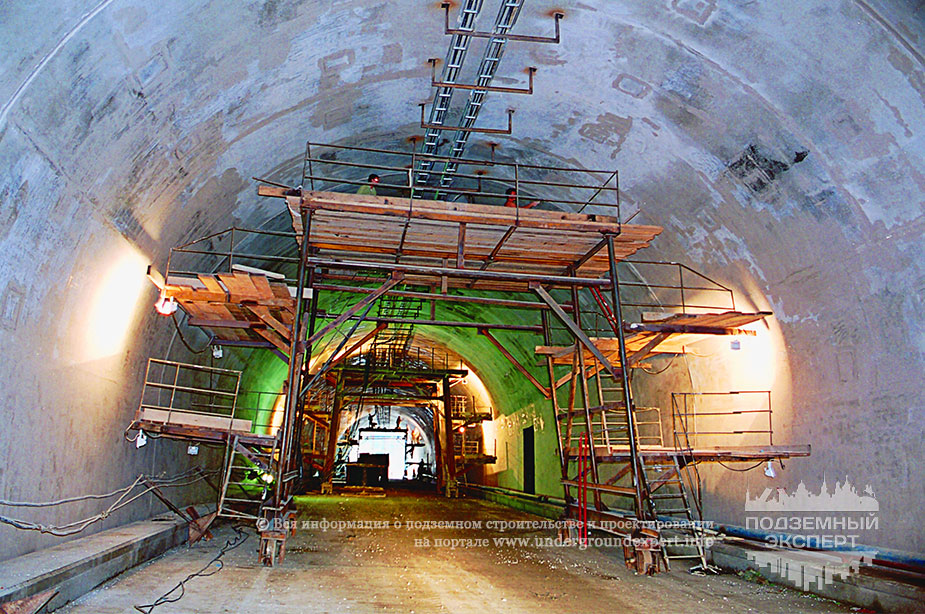
Construction of the tunnel in Sochi, 2002
— May we declare Lenmetrogiprotrans the leader in Russia by the number of the designed projects? Did you surpass Metrogiprotrans, the Moscow-based design institute your institute before was a branch of?
— Absolutely! Since 1984 by the decree of the Ministry of Construction Lenmetrogiprotrans appointed the head design organization for the mountain transport tunnel planning, for example.
— Which universities prepare specialists for your institute? Do you hire in St Petersburg or from all the cities of Russia?
— The Mine Univerisity, St Petersburg State Transport University, St Petersburg State University of architecture and civil engineering. But we have employees from all the country, we do not set any restrictions. If there is competence, we offer a position.
— About competence, what do you think about the latest Elon Musk project The Boring Company? How realistic are these ideas?
— It is the matter of funding. With the suitable amount, the tunnels will be constructed. It is not from the realm of fantasy.
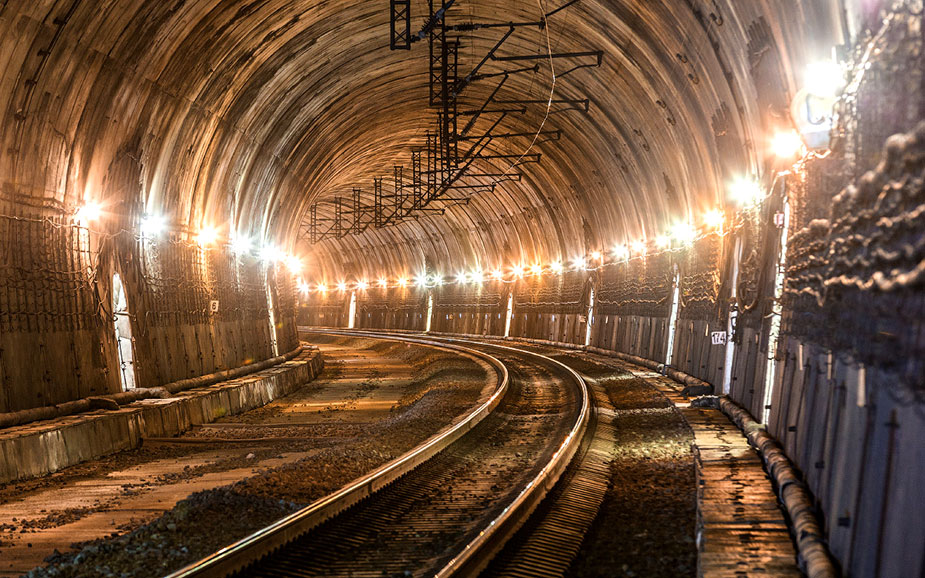
The second Baikal tunnel. Photo: Aleksandr «Russos» Popov.Source: russos.livejournal.com
— Let’s talk about ambitious projects, what can you possibly tell us about the tunnel under the Bering stray? The institute developed the basic design, right?
— In 90es, the preliminary analysis and calculations were made. But it was more about dreaming up than designing. Although we still keep the preliminary schemes somewhere, might be useful for the further experience.
— How differs the difficulty of the tunnel designing in terms of their application? For example, you designed underground neutrino laboratory in the Northen Caucasian mountains, the underground laboratory in Lomonosov and in Gatchina.
— I could tell you something mystifying and vague about details and peculiar specifications, but frankly speaking, with our experience it is all the same. We survey, calculate, design and then go forward and work.
Additional articles
Select an article of interest:
Mongolia designs new railway “Bohdan”
March 1, 2022
The construction of largest hydraulic tunnel has begun in Qatar
February 28, 2022
JSC "VO "Mashinoimport" supplied escalators for the Novosibirsk metro
December 22, 2021
Russian city Samara plans to build a metro
December 17, 2021
Tell us about our article to your friends,
sharing a link in a social network















Comments (0)
I hereby confirm that I am familiar with the privacy policy of
and agree to the processing of personal data. Read more